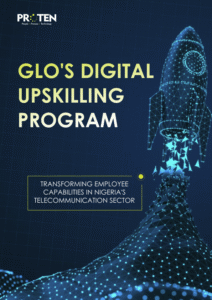08 February 2024
Beyond Paychecks and Perks: How Leaders Ignite Employee Motivation

Have you ever felt like your employees are going through the motions? They show up, do their work, and go home. But there’s no real spark in their attitude toward work. You know they have more to offer, but you have no idea how to unlock that potential. Well, it’s not about adding more bonuses and benefits. It’s about igniting employee motivation. Today’s workforce is hungry for something more substantial: genuine connection, a sense of purpose, and the ability to contribute to something larger than themselves.
This intrinsic motivation fuels individual and organizational success, yet statistics reveal a concerning reality: Gallup’s State of the Global Workplace report for 2023 shows only 23% of global employees are engaged, leaving a vast majority disengaged and potentially on the brink of disloyalty. Leadership holds the key to unlocking this untapped potential. By fostering a culture of engagement, leaders can ignite the spark of motivation and sustain it over time. But how exactly can leaders play this pivotal role? In this article, we’ll be digging deep into some actionable strategies based on the latest research and insights. But first, let’s define exactly what “employee motivation” entails.
What is employee motivation?
Employee motivation, or employee engagement, is a way to measure how fulfilled and connected employees are to their work, your business, and its success. Take it as a relationship between you and your employee, where your employee loves their work and is willing to take up responsibilities without you having to do much convincing, or any at all. And you, as the employer, recognize and appreciate their efforts.
So you might be asking, Why is employee motivation so important? What does it have to do with your company’s success? Well, this motivation is what drives productivity. Engaged employees are more productive and can increase workforce morale. They are more motivated and loyal, show more availability, produce high-quality work, and ultimately contribute to company growth and employee retention. An increase in employee motivation also subsequently leads to reduced employee turnover.
Now that you understand what employee motivation is about, let’s talk about how leaders play a role in boosting it. In our thorough research, we found some strategies applied by top business leaders that you can also adopt:
Leading By Example.
In a publication by Asana, Dustin Moskovitz, co-founder and CEO of the franchise, said, when asked his view on leading by example, “As a leader, I know it’s my responsibility to set the tone for our company’s culture.”
Leading by example is the cornerstone of igniting employee motivation and engagement. Employees look to their leaders for inspiration and guidance. Leading by example means embodying the values you expect from your team. Your actions as a leader guide your employees and inspire them to do the same as you. So when you demonstrate passion for the company’s mission, they will observe and follow suit. It’s important to note, however, that you must exhibit ethical and transparent behavior. Whether you like it or not, your employees will always observe you. Shows of inconsistency will only gather questions of distrust because your actions don’t match your words. This means the next time you try to motivate them to do something, they may not take you seriously because “after all, my supervisor doesn’t do what they say.” Always remember that actions speak louder than words.
Fostering Open Communication and Feedback.
You might have the most outstanding idea on the planet as a leader, but if you can’t get your team to understand your vision, your plans are as good as diminished. Closed communication channels stifle engagement. As a leader, you must encourage open dialogue, active listening, and two-way feedback loops. Regularly seek employee input on projects, goals, and even leadership decisions. This builds trust, demonstrates respect, and empowers employees to feel valued and heard.
Before you proceed, ask yourself this question: Do I have open communication with my team members?
Creating Opportunities for Growth and Development.
While stable environments hold certain benefits, prolonged periods of stagnation can be detrimental to employee engagement and motivation. As a leader, fostering continual growth opportunities within your team can be a key factor in sustaining their enthusiasm and drive. Providing access to training programs, mentorship initiatives, and avenues for skill development helps employees feel invested in their professional journeys.
This fosters a sense of progression and personal fulfillment, which can translate into long-term motivation and engagement within their roles. Investing in your team’s development is more than offering perks; it’s about creating a dynamic environment where employees feel their growth and contributions are valued. By offering pathways for advancement and skill acquisition, you empower your team to evolve alongside your organization, leading to a mutually beneficial and rewarding experience.
Recognizing employees.
Appreciating employees with rewards is a great start, but true motivation ignites when recognition goes beyond the tangible. When you truly see your employees, valuing their voices, encouraging their thoughts, and providing opportunities for them to be heard, the impact transcends a simple “thank you.” Imagine the shift when you actively incorporate their ideas, celebrate small wins alongside big victories, and offer genuine encouragement along the way.
This fosters a sense of belonging, fuels individual ownership, and ultimately ignites the motivation that drives true engagement and success. Recognition is not about a singular action; it’s about building a culture where appreciation is part of everyday interactions, and this empowers your employees to thrive.
Empowering employees.
Studies have shown that empowered employees are more engaged, and companies with highly engaged employees are 21% more profitable . Micromanagement is a motivation killer. Trust your team members to own their work, make decisions, and take initiative. Think of it this way: instead of micromanaging every detail, provide your team with clear goals and necessary resources, and give them autonomy to execute their tasks. This fosters a sense of ownership, responsibility, and, ultimately, increased motivation.
Cultivating a Culture of Well-Being.
Investing in employee wellbeing is a strategic move in employee motivation. It fuels a sustainable fire within your workforce. When employees feel their physical, mental, and emotional well-being is actively supported, they’re naturally more inclined to bring their best selves to the table. This translates directly to boosted performance and retention. As a leader, you must be prepared to adapt, listen to your employees’ needs, and continuously refine your approach. The rewards of a healthy, motivated workforce will make the journey worthwhile.
Last Note…
Leading for employee engagement is not a one-time effort; it’s an ongoing journey that requires commitment, intentionality, and consistent action. By embracing these leadership strategies, you can ignite the spark of motivation within your team, unleashing their full potential and propelling your organization towards success. Remember, engaged employees are more productive, innovative, and loyal, ultimately driving superior business outcomes. It’s time to unleash the power of motivated employees by becoming a leader who truly ignites and sustains engagement.
As a company dedicated to employee motivation, Proten International understands the power of purpose, connection, and well-being. That’s why we offer practical learning solutions for leaders looking to cultivate a thriving work environment. Explore our expertise and empower your team today!
Join 2000+ Subscribers
Subscribe to Our newsletter to stay informed

UK: 5, Seacourt road, London. SE2 9UW
NIGERIA: 11a, Mojidi Street, off Toyin Street, Ikeja, Lagos.
GHANA: F393/4 Otwse street, Osu, Accra, Ghana
(+234) 901 278 1155
info@protenintl.com
Our Services
Latest Tweets
Lorem ipsum dolor sit amet, consectetur adipiscing elit. Donec nec metus libero. Aliquam non mauris.
Copyright © 2024 Proten. All Rights Reserved
Terms Of Service
Privacy
Cookies










